The Northern Miner has compiled the five largest uranium reserves and resources at projects around the world using the IntelligenceMine database of our sister company Infomine. The list excludes inactive projects.
1. OLYMPIC DAM, AUSTRALIA
BHP Billiton’s (NYSE: BHP; ASX: BHP; LON: BLT) 100%-owned Olympic Dam iron oxide copper-gold mine in Australia takes the cake. Located 560 km north of Adelaide, Olympic Dam is one of the world’s largest deposits of copper, gold and uranium. It also hosts large amounts of silver.
As of June 2016, the underground mine contained measured and indicated resources of 6.2 billion tonnes grading 0.03% uranium oxide (U3O8) for 3.3 billion lb., which includes 678.5 million lb. in reserves. Inferred resources are 4.2 billion tonnes at 0.02% U3O8 for 2.2 million lb. tonnes. This puts reserves and uranium resources at 5.5 billion lb. U3O8.

Facilities at BHP Billiton’s Olympic Dam copper-uranium-gold mine in South Australia, where the company has delayed a US$30-billion expansion amid rising capital costs. Source: BHP Billiton.
2. HAGGAN, SWEDEN
Aura Energy’s (ASX: AEE) wholly owned Haggan exploration project forms part of a large uranium field in central Sweden. The uranium occurs with molybdenum, nickel, vanadium and zinc in black shales.
A 2012 scoping study suggests Haggan could produce 7.8 million lb. U3O8 a year for 30 years. Estimated start-up costs are US$540 million. An August 2012 Joint Ore Reserves Committee (JORC) compliant resource estimate shows Haggan contains 2.3 billion inferred tonnes at 0.02% U3O8 for 803 million lb. U3O8.
Aura has started a community engagement program at the project, however, and notes its 2017 focus is on completing a feasibility study at its smaller Tiris uranium project in Mauritania. Tiris is a shallow open-pit project with 49 million lb. U3O8 in indicated and inferred. Estimated start-up costs are US$45 million, with production set to start in late 2018 or early 2019.
3. KVANEFJELD, GREENLAND
Greenland Minerals and Energy’s (ASX: GGG) Kvanefjeld rare earth elements and uranium project sits in Nakkaalaaq North on the southwest coast of Greenland. The company completed a feasibility study on the project in 2015, which it updated early last year. As of 2015, the project’s three deposits — Kvanefjeld, Sorensen and Zone 3 — had 451 million measured and indicated tonnes at 0.03% U3O8 for 267.3 million lb. inclusive of reserves, plus 559 million inferred tonnes at 0.03% U3O8 for 325.3 million lb. U3O8. Combined, Kvanefjeld hosts resources of 593 million lb. U3O8. The estimate is JORC compliant. Last September, Greenland Minerals reported the leading rare earth firm Shenghe Resources Holding agreed to acquire 12.5% of the company and start a strategic working relationship to help develop Kvanefjeld.

Drillers at the Sorensen deposit, part of Greenland Energy and Minerals’ Kvanefjeld REE-uranium project on the southwest coast of Greenland. Credit: Greenland Energy and Minerals.

Overview of the Narsaq Peninsula in southern Greenland. The Kvanefjeld project is accessible year-round by ship from the North Atlantic. Credit: Greenland Minerals and Energy.

Local employees process core at Greenland Minerals and Energy’s Kvanefjeld rare earth elements-uranium-zinc project in southern Greenland. Source: Greenland Minerals and Energy.
4. KARATAU, KAZAKHSTAN
Karatau is an operating in-situ recovery uranium mine in the Chu-Sarysu basin in the Suzak region, South Kazakhstan province. The mine is operated by the Karatau joint venture, where Uranium One (TSX: UUU) owns 50% and state-owned firm Kazatomprom owns the other half.
Karatau started commercial production in 2009. As of June 2012, reserves stood on a 100% basis at 149 million tonnes grading 0.041% U3O8 for 135 million pounds. Measured and indicated resources are 86.5 million tonnes at 0.087% U3O8 for 166 million lb., plus inferred resources of 65.9 million at 0.112% U3O8 for 163 million pounds. This puts the combined reserves and uranium resources at 464 million lb. U3O8.
Early this January, Kazatomprom said it intends to cut its 2017 planned uranium output 10% due to the slow recovery in the uranium market. The reduction will affect all mines wholly and jointed owned by Kazatomprom.
5. MCARTHUR, CANADA
Cameco’s (TSX: CCO; NYSE: CCJ) 70%-held McArthur River uranium mine is in the Athabasca basin of northern Saskatchewan. Areva Resources Canada holds the other 30%. The high-grade underground mine has been in production since 1999. At the end of 2015, McArthur River had reserves of 1.4 million tonnes grading 10.9% U3O8 for 336.5 lb. U3O8. It had 66,800 measured and indicated tonnes at 3.77% U3O8 for 5.6 million lb., plus 344,200 inferred tonnes at 7.72% U3O8 for 58.6 million lb. U3O8. Combined, the mine has reserves and uranium resources of 400.7 million lb. on a 100% basis.
Early last year, Cameco scaled back McArthur River’s 2016 output to 18 million lb. from 20 million lb. on a 100% basis due to the continuing weakness in the uranium market.

The McArthur River Uranium mine in Saskatchewan. Credit: Cameco Corp.
In January 2017, Cameco said it plans to trim the workforce at the McArthur River, Key Lake and Cigar Lake uranium operations 10% — or 120 employees in total — to lower costs. The reductions should wrap up by the end of May 2017.
ON HOLD
Projects with significant uranium reserves and resources on hold include Continental Precious Minerals’ (TSX: CZQ) MMS Viken uranium polymetallic project in Sweden. The company wrote down the value of the project, containing 1.16 billion lb. in indicated and inferred resources, to $1 last year, but sold it to EU Energy for $300,000 in January 2017.
Areva’s majority-held Imouraren uranium development project in Niger is on ice until uranium prices pick up. The project hosts reserves and uranium resources of 727 million lb. U3O8.

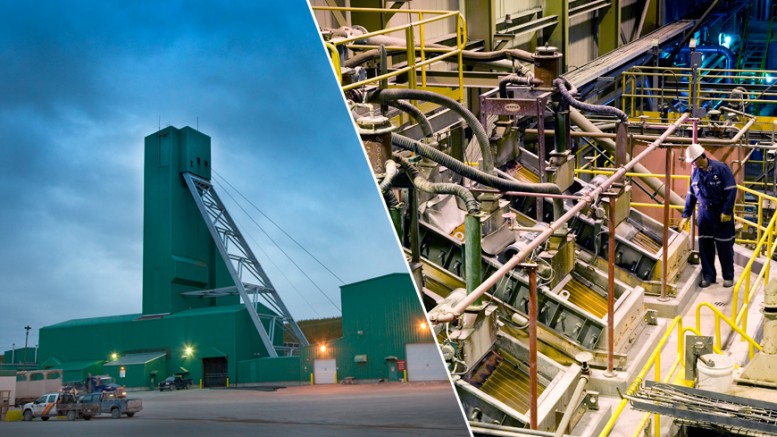
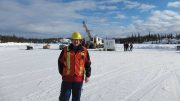
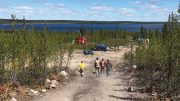
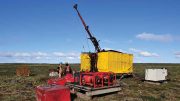
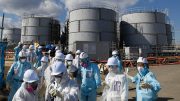
Be the first to comment on "TNM Data Miner: Top 5 global uranium resources"